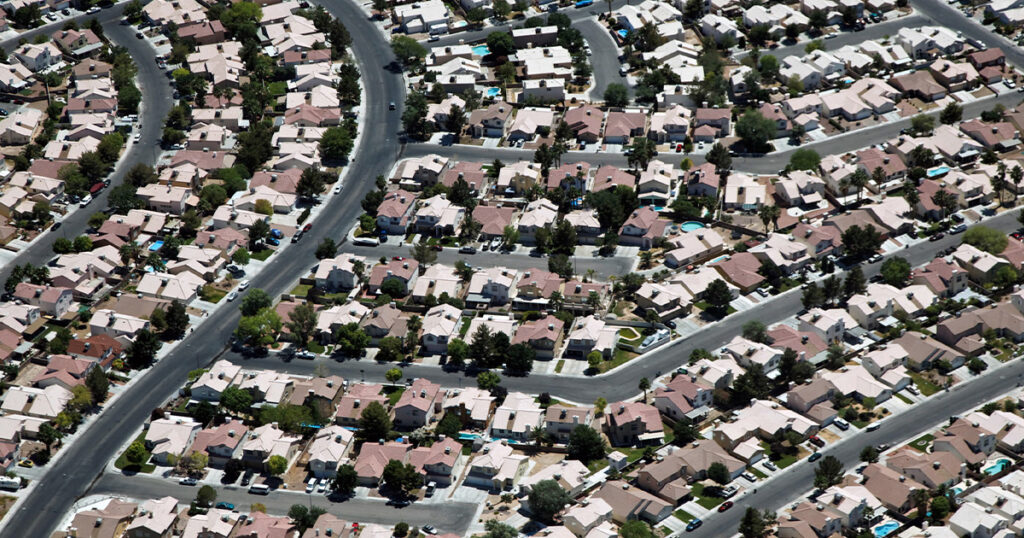
The American suburbs have often been subject to ridicule, whether from bored teenagers desperate to leave them or city dwellers happy to inhabit cramped apartments for the allure, energy, and amenities of downtown. Yet the Covid-19 pandemic has sparked a wave of new suburbanites, many of them coming from major cities in search of greener pastures—or at least back yards. In his new book, The Sprawl, Jason Diamond takes a closer look at suburbia in all its flawed glory, considering that cookie-cutter houses and strip malls may be more interesting—and influential—than most people ever give them credit for.
The sale of the American suburb—whether it be Brooklyn Heights before the Civil War, a rural place like McHenry that saw its future as a suburb, or Arcadia, which flattened out its past to build something new—has always been future thinking, focusing on the possibility of what could be, of a better life. Yet it feels as if we’re still waiting for that promise of the suburb to come to fruition.
Instead of the better tomorrow suburbia promised, we’re told that the suburbs are “uniform” and “banal,” a middling wasteland for the blissfully apathetic. We got mundane; we got disillusionment and darkness; we got weirdness. It’s easy to say these are all just abstract ideas, but the way they’ve manifested in our collective consciousness refutes that: these ideas have also materialized into great art. It’s Shirley Jackson writing about “people starting to come apart” in the suburbs in her short story “Pillar of Salt.” It’s the horror that lurks beneath the streets in Stephen King’s It or in the bad part of towns imagined by David Lynch. It’s Régine Chassagne of the band Arcade Fire singing about how “living in the sprawl … dead [I fixed the ellipsis here] shopping malls rise like mountains beyond mountains” on an album titled, simply, The Suburbs. It’s the teenage protagonist in Greta Gerwig’s Lady Bird looking to turn her back on the Sacramento suburbs where she grew up and on her family struggling to make ends meet so she can go to college somewhere “with culture.” It’s African Americans fearing they’ll fall into their own “sunken place” in the white suburbs of Jordan Peele’s Get Out. It’s that shot of Marty McFly going home to his sad little subdivision in Back to the Future.
How did we get here, and how can we do better?
Used by permission from The Sprawl (Coffee House Press, 2020). Copyright © 2020 by Jason Diamond.

